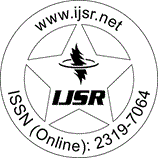Downloads: 1
India | Neurology | Volume 14 Issue 10, October 2025 | Pages: 271 - 276
A Study on Clinical and Electrophysiological Profile of Patients with Seizures / Epilepsy in a Tertiary Care Hospital
Abstract: Background: Epilepsy is a common neurological disorder affecting nearly 50 million people worldwide, with India accounting for about 12 million cases, almost one-sixth of the global burden. Accurate classification, aided by the ILAE 2017 framework, along with EEG and neuroimaging, is essential for diagnosis, prognostication, and management. Aims and Objectives: 1. To Study the Clinical Profile of Patients presenting with Seizures / Epilepsy. 2. To Study the Electrophysiological profile of Seizures / Epilepsy. 3. To Classify Seizures/Epilepsy according to ILAE Classification. Materials and Methods: A Hospital based Prospective observational study was conducted on 150 patients presenting with seizures/epilepsy to a tertiary care centre from September 2024 to December 2024.All patients aged above 5 years, presenting with Seizures / Epilepsy to Department of Neurology, Government General Hospital, Guntur were included in the study and Age < or equal to 5 years ,Pregnancy, Patients /guardian who have not given written consent were excluded .Clinical evaluation, seizure semiology, routine EEG, and neuroimaging were systematically recorded. Seizures were classified according to the ILAE 2017 classification. Results: The majority of patients were in the 20?40 years age group (42%), followed by 41?60 years (30%). Generalised seizures predominated (91.3%), with generalised tonic?clonic seizures (82%) being the most frequent subtype. Focal seizures accounted for 25.3%, mostly focal impaired awareness seizures (22%). Focal to bilateral tonic?clonic seizures were seen in 2%. Symptomatic/structural etiologies comprised 59.3%, with gliosis (27%), mesial temporal lobe sclerosis (12.4%), calcifications (12.4%), and cerebrovascular disease (11.4%) as leading causes. MRI revealed abnormalities in 66.7%, while EEG abnormalities were detected in 28%. Conclusion: This study highlights the predominance of generalised tonic?clonic seizures and a high burden of structural etiologies in a tertiary care cohort. Integration of clinical semiology, EEG, and neuroimaging is crucial for accurate classification and comprehensive epilepsy care in resource-limited settings.
Keywords: Epilepsy, Seizure classifications, EEG, Neuroimaging, Structural Etiology
How to Cite?: Dr. B. Geetha Nagamani, Dr. Aruna Kumari Upputuri, Dr. M Bhargavi Devi, Dr. G. Bindu Narmada, Dr. N V Sundarachary, Dr. J V Ranadev, "A Study on Clinical and Electrophysiological Profile of Patients with Seizures / Epilepsy in a Tertiary Care Hospital", Volume 14 Issue 10, October 2025, International Journal of Science and Research (IJSR), Pages: 271-276, https://www.ijsr.net/getabstract.php?paperid=SR251005211032, DOI: https://dx.doi.org/10.21275/SR251005211032
